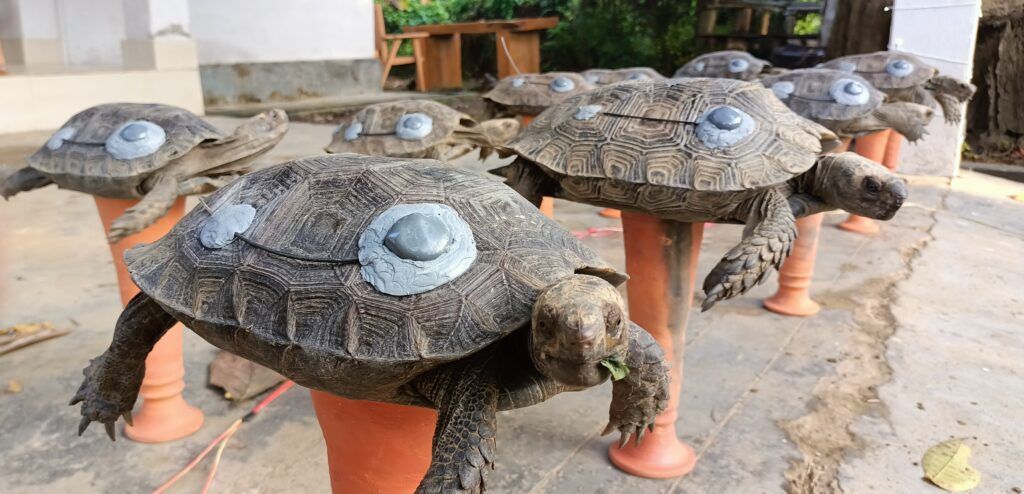Asian giant tortoises in India

The Critically Endangered Asian giant tortoise is the largest tortoise in mainland Asia and possibly the oldest tortoise species in the world.
Forest giants
Asian giant tortoises are only found in Southeast Asia and are one of the oldest species of tortoise in the world. They’re also the largest tortoise species in mainland Asia, reaching up to 25kg in the wild (and even more in captivity). They live in forests and are a key stone species, which means they’re crucial to the ecosystem. They help disperse seeds, dig soil and graze on plants. They’re the only species of tortoise that make a nest above ground instead of in a hole. The female pushes leaves into a big pile, lays up to 50 eggs inside and then sits on top to protect it. She chases predators and intruders away.

Asian giant tortoises have almost completely disappeared from across northern mainland Asia – India and Thailand – and is listed as Critically Endangered by the IUCN. Tribal hunting and habitat loss has led to the species decline, and there are now very few animals left in the wild.
Reintroducing Asian giant tortoises

Asian giant tortoises have almost completely disappeared from across northern mainland Asia. Now only found in Bangladesh, India, Myanmar and Thailand they’re listed as Critically Endangered by the IUCN. Tribal hunting and habitat loss has led to the species decline, and there are now very few animals left in the wild.
With our funding, the Turtle Survival Alliance, led by Shai Singh and his team, is reintroducing Asian giant tortoises to the Wokha district in Nagaland, North East India. They’ve bred 114 hatchlings, from 12 adults in captivity at Nagaland Zoological Park over the past six years.
Ten of the hatchlings are fitted with radio transmitters and being released into a soft enclosure in the Wokha district – an area of forest that is fenced to protect from predators and poachers. The released tortoises will be tracked for three months to learn how they adapt to the wild. By monitoring the tortoises in the enclosure, the project will collect data on what they choose to eat, where they choose to live in the forest and how factors like rainfall and temperature change affect them. This will advise future reintroductions. After three months the fences will be removed and the tortoises will be able to disperse throughout the wider forest.

The Turtle Survival Alliance is also working with local communities and tribes who own the forest. It’s important to include them in the conservation of these tortoises. Two young people from local tribes will be trained to track and monitor the released juveniles in the forest, and at least 200 local tribal members will be educated on the tortoise conservation project through meetings and awareness programmes.

We want to give Asian giant tortoises a brighter future; with your help we can make a difference.
Header image Biont creations
